3 Days in Munich, Germany
/A Funny Note about Saltzburg
When we visited the Scnapps house in Salzburg we met several friendly older men. One of the older gentlemen told us that the Scnapps house is famous as the one and only, Rick Steves, had visited it years ago to film a travel episode about Salzburg. Not only had Rick Steves visited, but this man had cheers-ed with Rick Steves while he was there. The man was very proud of this! Later at our hostel, Scott downloaded the Salzburg travel episode and indeed the man was in the video cheers-ing with Rick Steves. He must spend a lot of time at the schnapps house!
Crossing the Border to Germany
We crossed into Germany from Austria via bus. The border crossing was much simpler than we had anticipated. We expected long waits because of heightened immigration precautions due to recent terrorist threats. But, we got crossed into Germany after border patrol boarded the bus, with a quick glance at our passports. We were dropped off at the bus station, which was conveniently located very close to our hostel. We dropped our bags at the hostel and left to explore Munich.
We wandered down some main streets and inevitably ended up on a touristy shopping street. It seems every city has one of these that we somehow always find ourselves on. This street was particularly fascinating as it has not 1, not 2, not 3, but 4 H and M's! A bit excessive? We think so.
We observed the architecture as we walked around and the cleanliness of it’s streets. Much of Munich is modern and rebuilt after WWII. However, many of the buildings have been designed to give the impression that they are older than they are. We walked to one of the main squares, Marienplatz, home of the New Town Hall and Glockenspiel clock tower.
St. Peter's Church in Munich, Germany
St. Peter's Church in Munich, Germany
St. Peter's Church in Munich, Germany
Beer and Sausage
As we aimlessly meandered the streets, taking in the sights, we found ourselves at 'Eatly' an Italian market that Scott had heard of before (they have chains in the states) Because of my love for Italian food he insisted we go in and check it out, not that it took much persuasion. We checked out the fancy olive oils, tried every free sample available (went back for seconds and thirds), explored the extensive wine cellar and finally split a slice of focaccia pizza. Yum. Though Eatly is a chain restaurant you can feel the Italian influence and find many Italian restaurants in Munich, more so in Austria because of its proximity to Italy.
After whetting our appetites, we set out to find a reasonably priced authentic German meal. We ended up at crowded beer hall, sharing a communal table in typical beer hall fashion. We tried some local beer, Scott had a liter and I had a quarter liter of the dunkel beer, or ‘dark’ beer. We each had a soft pretzel, which is served in place of bread at the start of the meal, and we shared a plate of sausages and sauerkraut. Apparently there is a large variety of sauerkraut in Germany- a pink colored sauerkraut, cooked and uncooked sauerkraut, hot and cold sauerkraut. We have a lot of sauerkraut to try! Good thing we will be in Germany for a while. And the sausages..so many different types of sausages! Made from every body part and type of animal, including the off-putting white colored sausage made from veal.
We returned to our hostel after several hours of walking. Our hostel is, coincidentally, right across the street from a brewery/beer hall. The street smells like malt and beer, just beckoning those who walk by to stop in and grab a beer. I’m not sure if this location is coincidental or careful planning on Scott’s behalf.
Upon returning to our hostel, we opened the door to our room to find the lights off and our hostel mate in bed. We had tried to talk to him briefly when we dropped our bags off earlier but he was standoffish and had his back turned to us, distantly staring out the window. Now as he was laying in bed and from what he heard, quietly talking and laughing to himself. It made Scott and I quite uncomfortable. We packed up our bags, slipped out of the room quietly and asked to switch rooms. We ended up getting a new 4 bedroom dorm all to ourselves with our own bathroom!
Our Hostel in Munich, Germany
Our Hostel in Munich, Germany
Click Here for a Comprehensive Review of Where to Stay in Munich
Walking Tour
The following morning we met the tour guide of our free walking tour at the main square in front the Glockenspiel clock tower. We watched the clock tower show, which our tourguide informed us has laughably been rated Europe's second biggest tourist let down. The show consisted of a few wooden figures rotating as well as several bells chiming.
Free Walking Tour in Munich, Germany
Free Walking Tour in Munich, Germany
We followed the tour guide and listened to some history about Munich. Munich was named for "near the monks" an area of Germany where monks were living, and more importantly producing beer. Apparently beer was made when monks were fasting for lent. They were not permitted to eat bread and instead developed their own "liquid" form of bread. Also an interesting fact-residence of Munich consider themselves Bavarians first and German’s second. Munich falls in the region of Bavaria and there is much pride over that fact.
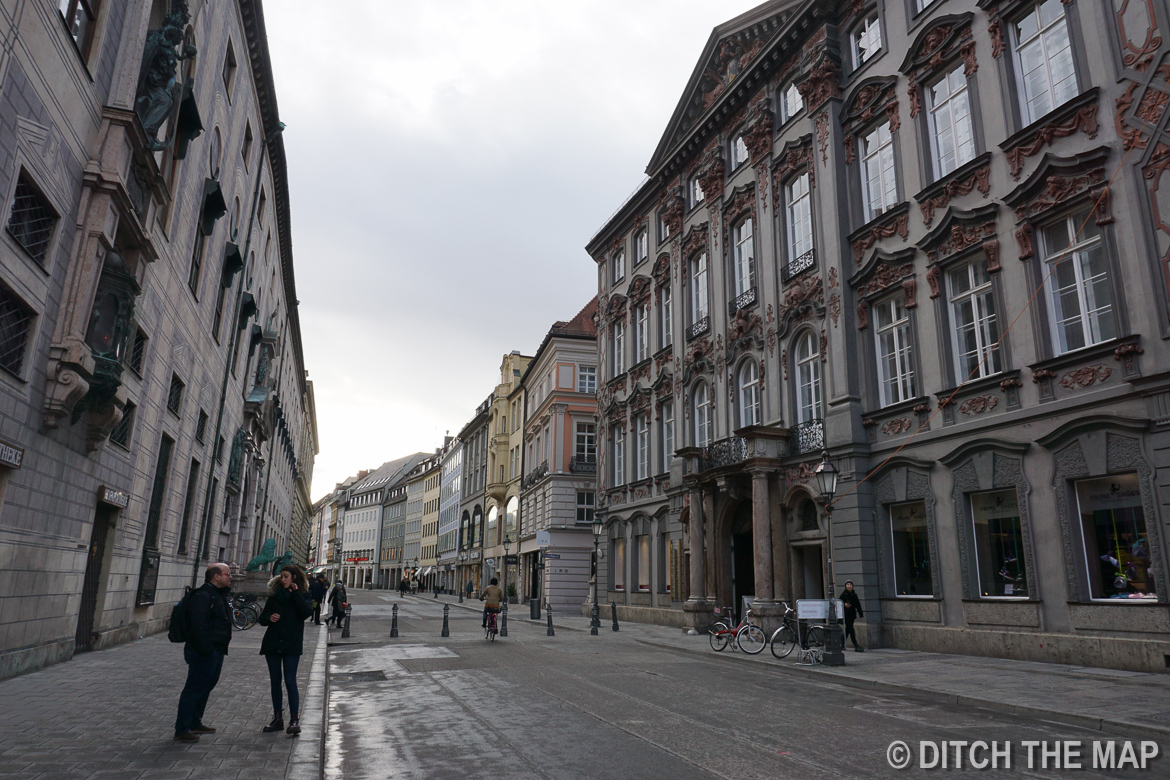
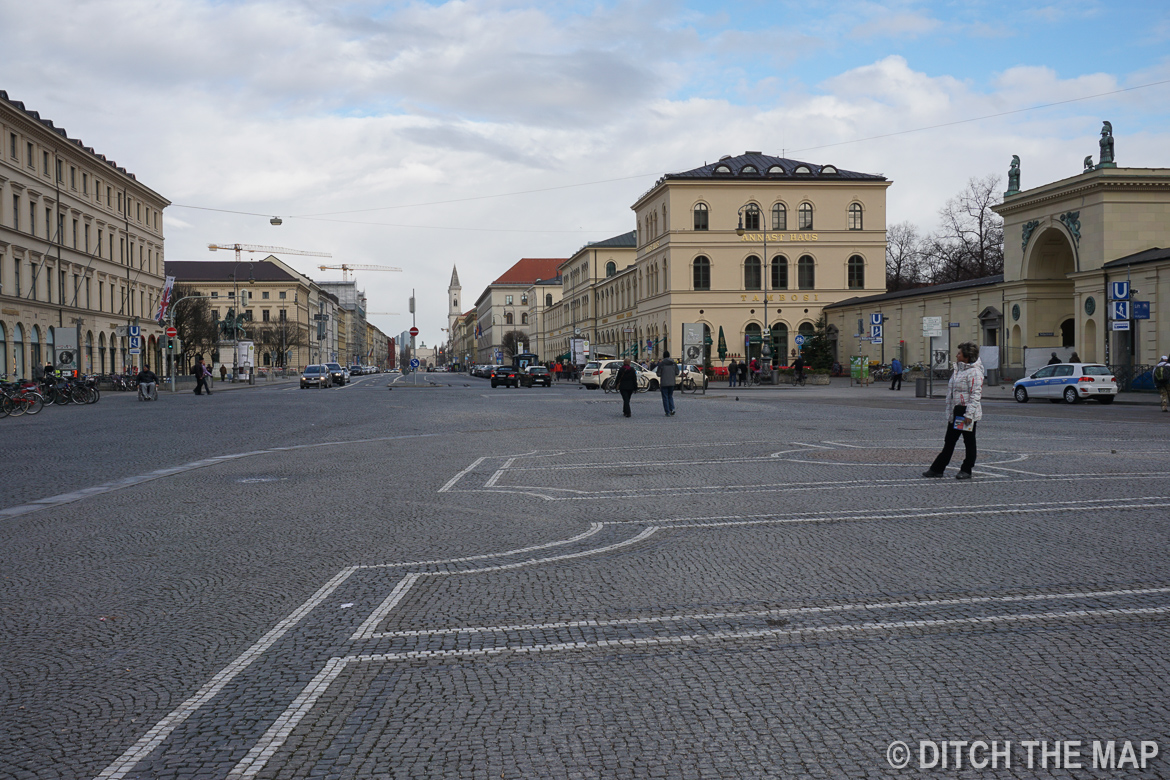
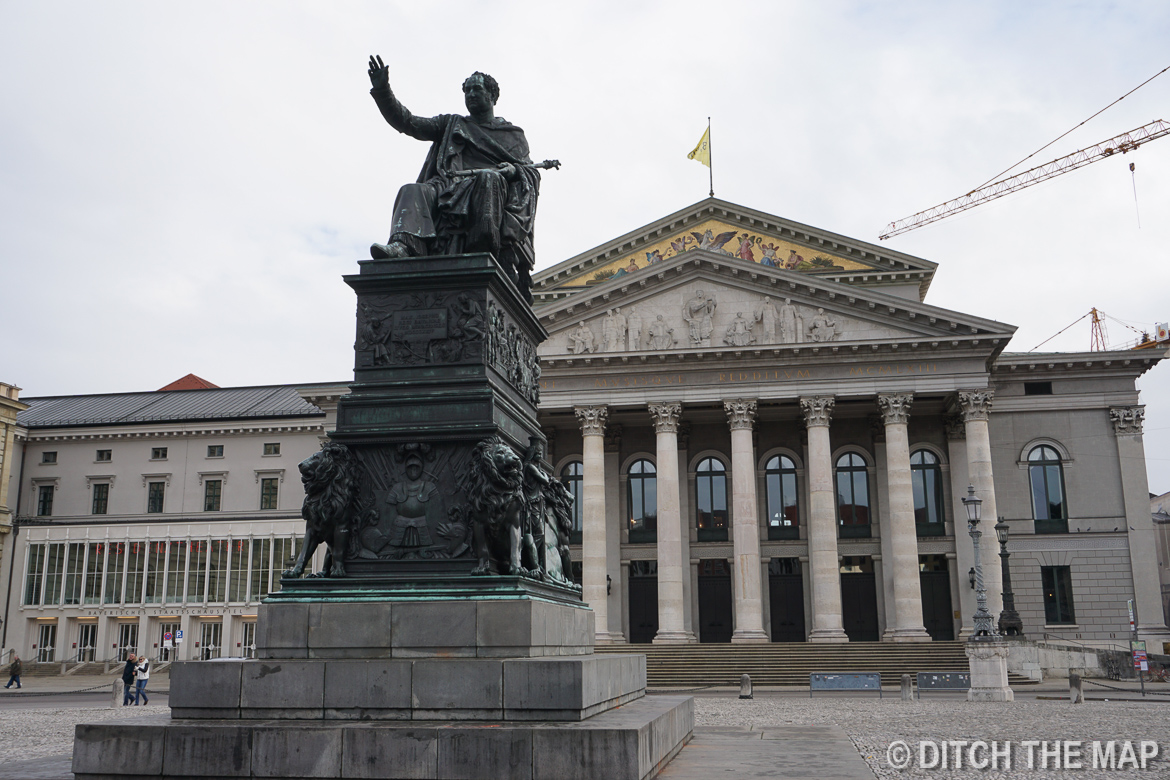
Of course the history included some Hitler and Nazi information, which we learned more about the following day at Dachau concentration camp. He told us an interesting story about a young university student, Sophie Scholl, who was involved in the White Rose non-violent anti Hitler group. She distributed pamphlets about the horrors of the Nazi regime and was later caught and beheaded at the age of 21. I was moved by her courage and had to research her after the tour. I learned that before she died, she said, "How can we expect righteousness to prevail when there is hardly anyone willing to give himself up individually to a righteous cause. Such a fine, sunny day, and I have to go, but what does my death matter, if through us, thousands of people are awakened and stirred to action," a very powerful statement from a very courageous girl. Her voice is only one of many that resisted and despised the Third Reich and the political indoctrination at the time.
We ditched out of the tour a bit early- the pace was a little slow for us and the weather was so cold we wanted to keep moving, not stopping and trying to hear our guide amidst our group of over 30. We stopped for a mid day beer at Hofbrauhaus which has been brewing beer since the late 1500’s. We split a beer and a pretzel, of course. We had the special treat of listening to some authentic live music in the beer hall by men wearing traditional garb of lederhosen.
Famous Beer Hall Downtown Munich, Germany
Sharing a Drink with our Hostel-Mate in Munich, Germany
The German Museum
After our brief reprieve from the cold, we headed back out to walk to the German Museum, a museum dedicated to science and technology. It contained exhibits about astronomy, marine technology, integrated circuits, land surveying tools, environmental science, simple machines, static machines and fluid machines, and an extensive pharmaceutical exhibit…to name a few. Scott found the museum to be comprehensive and impressive. We spent three hours in the museum, and only left at 5 because the museum was closing.
More Beer, Naturally
On our walk back from the science and technology museum, we stopped by a fast food Asian restaurant for take out. Back at the hostel, we took full advantage of having our own room, and we split our meal while watching some TV. Oh, the simple pleasures.
As we were relaxing we were very surprised by the entrance of an older man into our room. Looks like we wouldn’t have our own room after all. He was a friendly German man named Hermann, 61 years old, and stopping in Munich before going to another town in Germany to meet with a divorce lawyer about the right to a house he and his ex shared. With-in five minutes of stepping into our room, he invited us to join him for beers across the street at the beer garden. His English was ok, and at the beer garden we learned a little bit more about him. He had worked as a teacher and had three children, two of which were doctors. We chatted with three other guys at our table as well- young college students staying at another hostel in the area.
After our beers, Hermann showed us the site of Oktoberfest, which was just a short walk around the corner. Its hard to image the small grass covered square he showed us can accommodate the millions of visitors Munich welcomes every year for Oktoberfest. Hermann shared with us that at Ocktoberfest he sets up a tent and sells his own mead.
Back at the hostel, I made the mistake of telling Hermann that I was a teacher too. He spent 45 minutes showing me a math program he had made for his kids when they were in elementary school. He was very excited about it and it was impressive, considering he made it about 15 years ago. He insisted I sit down and try the math program, while Scott sat back on his computer, laughing to himself at what I had roped myself into. Note to self- stop being so nice.
Dachau Concentration Camp
We took a train and then a bus to reach Dachau concentration camp located a few miles outside of Munich. It was the first concentration camp built and served as a model for all other concentration camps. Initially it was not used as a death camp, but rather a “work and re-education camp” for political opponents, soviet war prisoners, and Jews. During the first seven years of its existence, there were less than 1,000 deaths. Some prisoners were even released. Later, from 1940-1945 the Jews were sent to extermination camps.
When war broke out the camp became increasingly crowded and conditions worsened dramatically. The camp was designed to hold 6,000 but the number of prisoners reached over 30,000. The barracks, which were built to accommodate 50, were filled beyond capacity with up to 500 prisoners. Needless to say, with such overcrowding disease and starvation were rampant.
Scott and I walked the grounds following our audio tour. We entered the camp through the gate with an inscription that mockingly read, “Work will set you free.” The audio tour was made even more chilling by the recordings of survivors of the camp as they told the tales of their horrific experiences. We walked the path of the prisoners, which lead us into an old building where they were mocked, taunted, shaved, showered, sometimes tortured and prepared for entry into the camp. This building has since been turned into a museum.
Entrance Gate to Dachau Concentration Camp Just Outside Munich, Germany
The museum contained artifacts, photographs, information and stories from the prisoners. Some of the photographs were disturbing to look at. An interesting exhibit talked about the use of propaganda by the Nazi regimen to promote the war and make the camp appear as a re-education program. Another unsettling exhibit talked about the medical experimentation performed on some prisoners. This experimentation involved studying the effects of drinking salt water, the effects of high altitude, the effects of low pressure, and the effects of hypothermia on the human body. Despite the sickening treatment of the prisoner and the conditions at the camp, the museum touched several times on an overwhelming sense of solidarity among the prisoners. The prisoners helped and looked out for each other, the prisoners that had medical backgrounds worked with the ill and others shared the little food they had or carried sick prisoners to roll call as to avoid brutal punishments.
Memorial at Dachau Concentration Camp Just Outside Munich, Germany
Memorial at Dachau Concentration Camp Just Outside Munich, Germany
The most emotional part of the tour was the last part, as our audio tour lead us to the crematorium. The older crematorium was not large enough to burn all of the bodies that were accumulating at the camp. Another crematorium was built to keep up with the increasing number of bodies. We saw photos of skeletal bodies piled on top of each other, stored in the room next to the ovens waiting to be burned. When the camp was liberated in 1945, the liberators commented on the horrible smell permeating the air for some distance from the building.
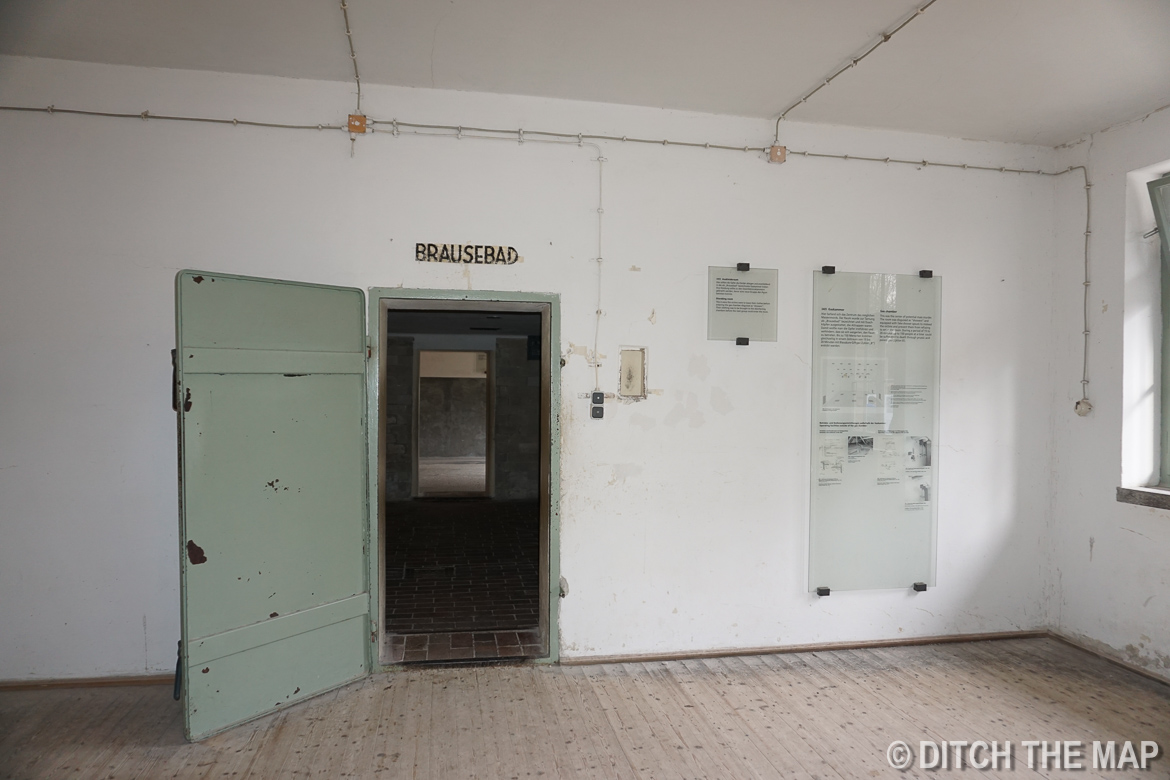


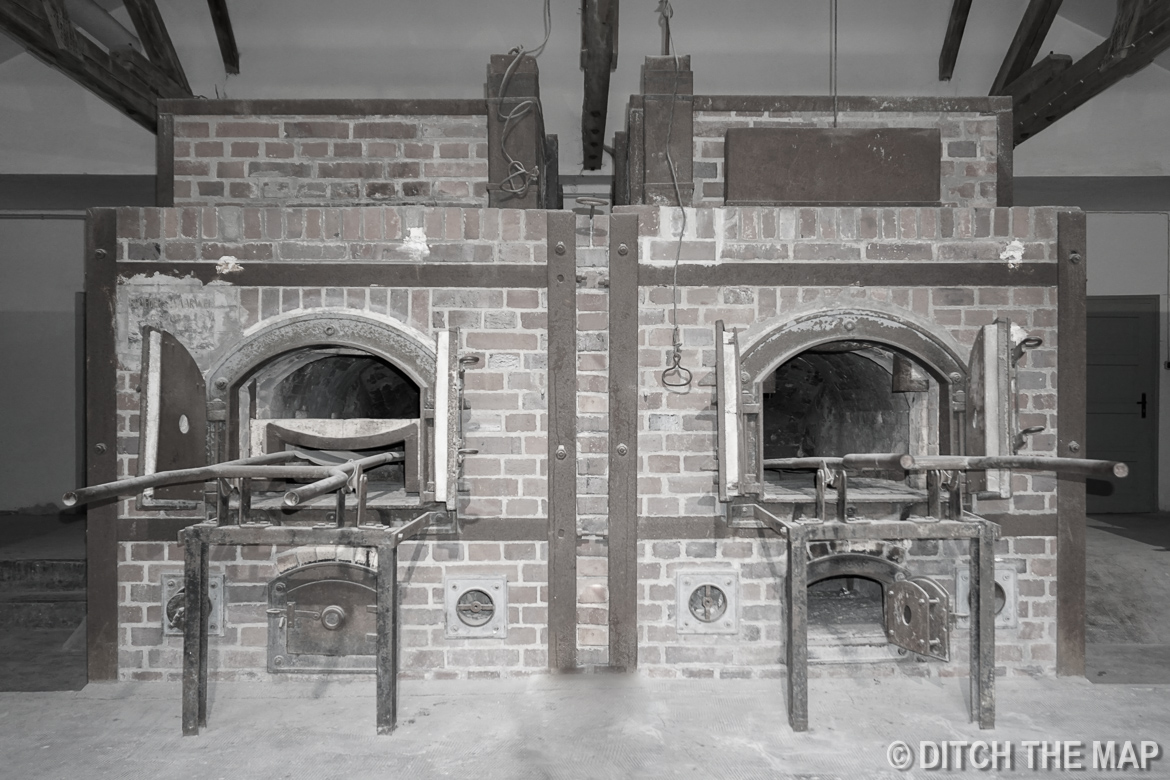
Viktualienmarkt
After our sobering experience at the concentration camp, we had a more lighthearted afternoon exploring the Vakalienmarkt, Munich’s large outdoor food market. There were a ton of dried meats and cheese and a variety of animal parts including pig snouts at butchers shop. We stopped to admire the pristine produce- Germans must have a high standard for fruits and veggies because they were all perfect. But there was a lofty price tag to accompany that perfection- $2.75 a pound for peppers for example (where as we’ve seen it for a dollar a pound elsewhere). We bought some pickles, sauerkraut, and stuffed grape leaves. They certainly love to soak nearly everything in vinegar here.
Viktualienmarkt Market in Munich, Germany
Viktualienmarkt Market in Munich, Germany
Later that evening we had some Thai food-spring rolls, Pho, and fried bananas with honey and peanuts for dessert. Not authentic German food, but delicious nonetheless. After dinner we went next-door to smoke some hookah. Our evening of Thai food and hookah is actually quite reflective of Munich. We observed great diversity in Munich from the cuisine to the people. Germany is very welcoming to immigrants and as many as 1 in 4 people in Germany are from other countries.
Where to Stay in MUNICH
A Comprehensive Guide to the Best Areas
Pin this article to read at a later date, or on your lovely trip to Bavaria!
Check out these 12 Viator tours below:
January 5-7, 2016 (original publish date)



